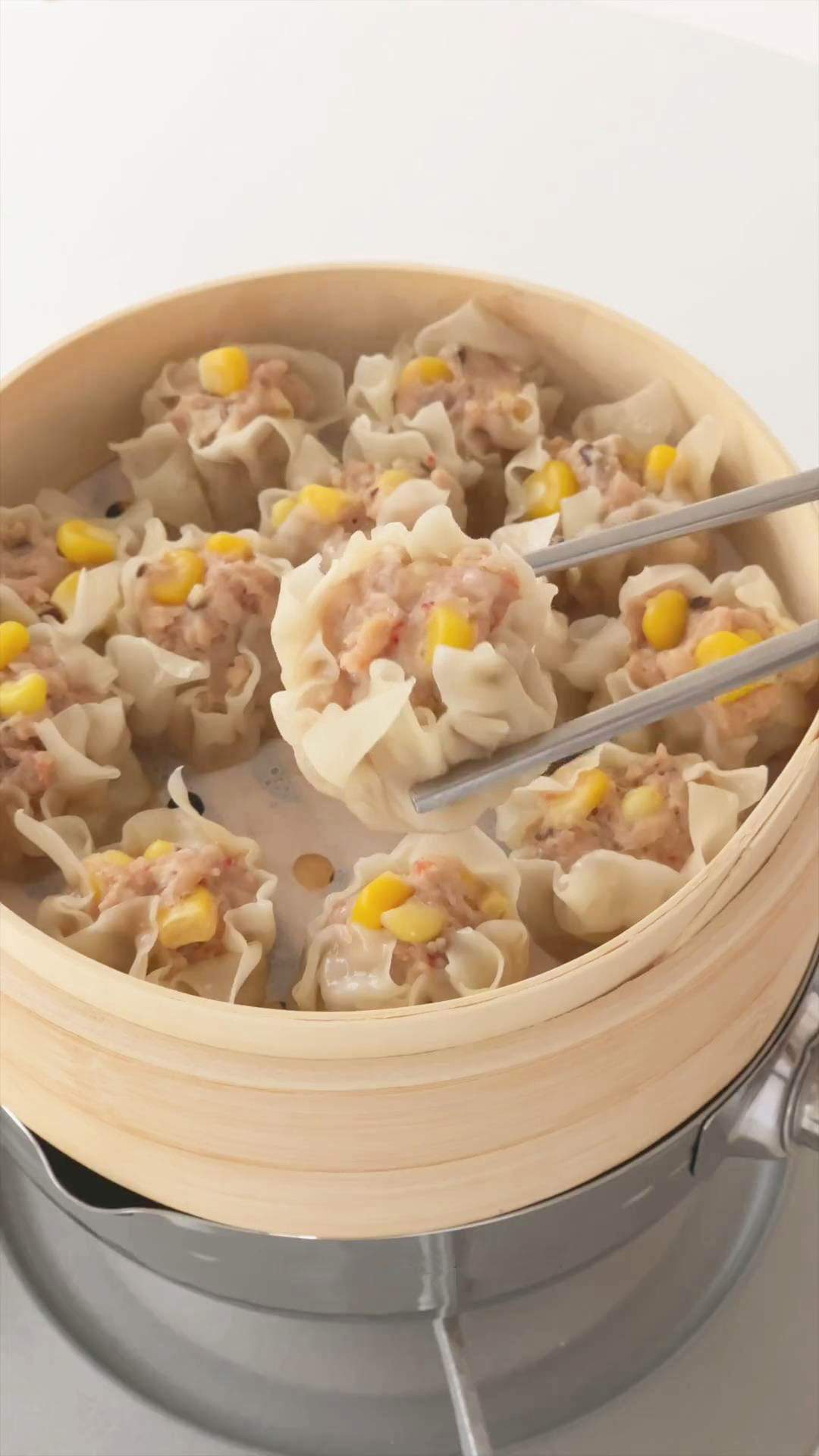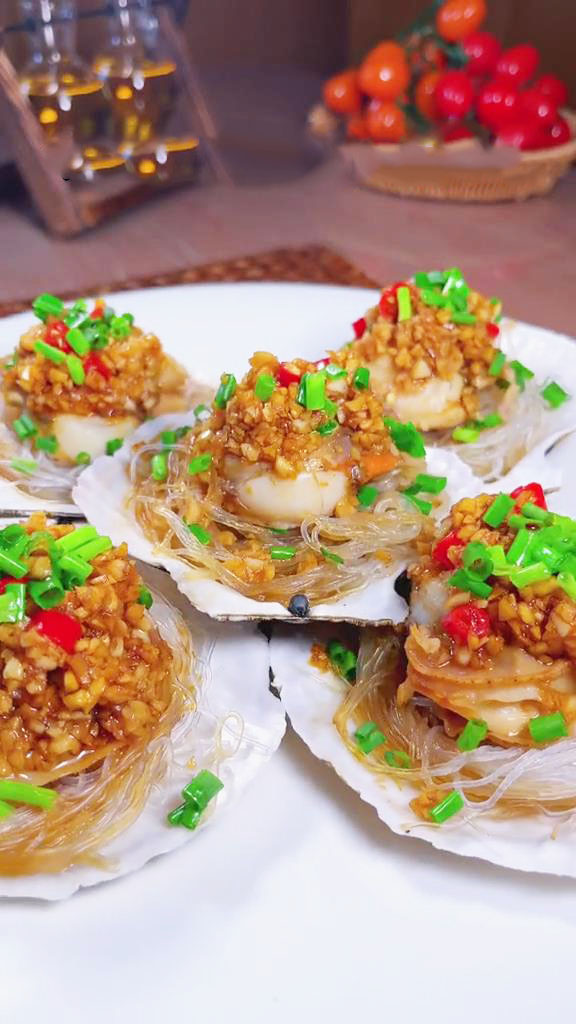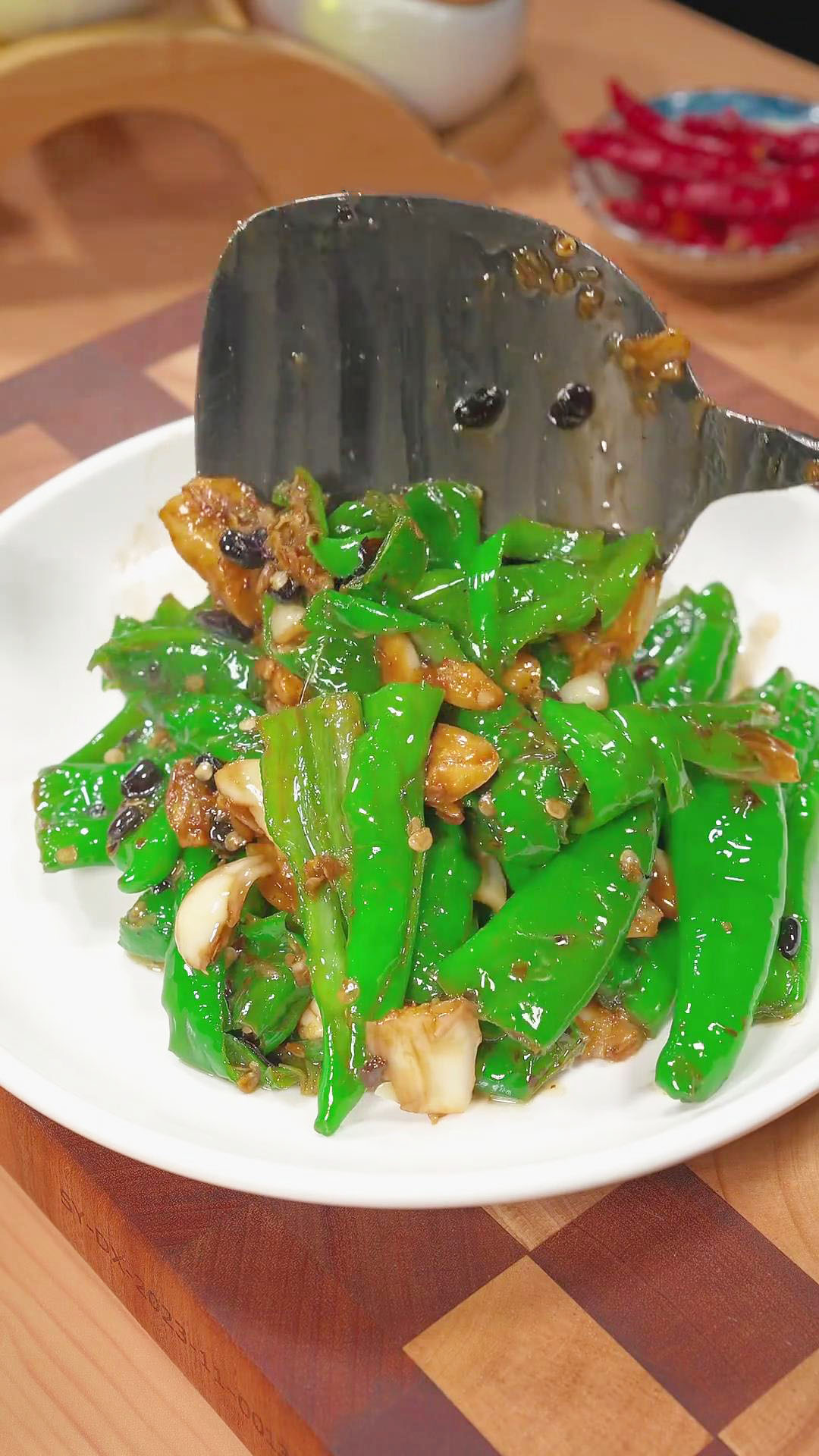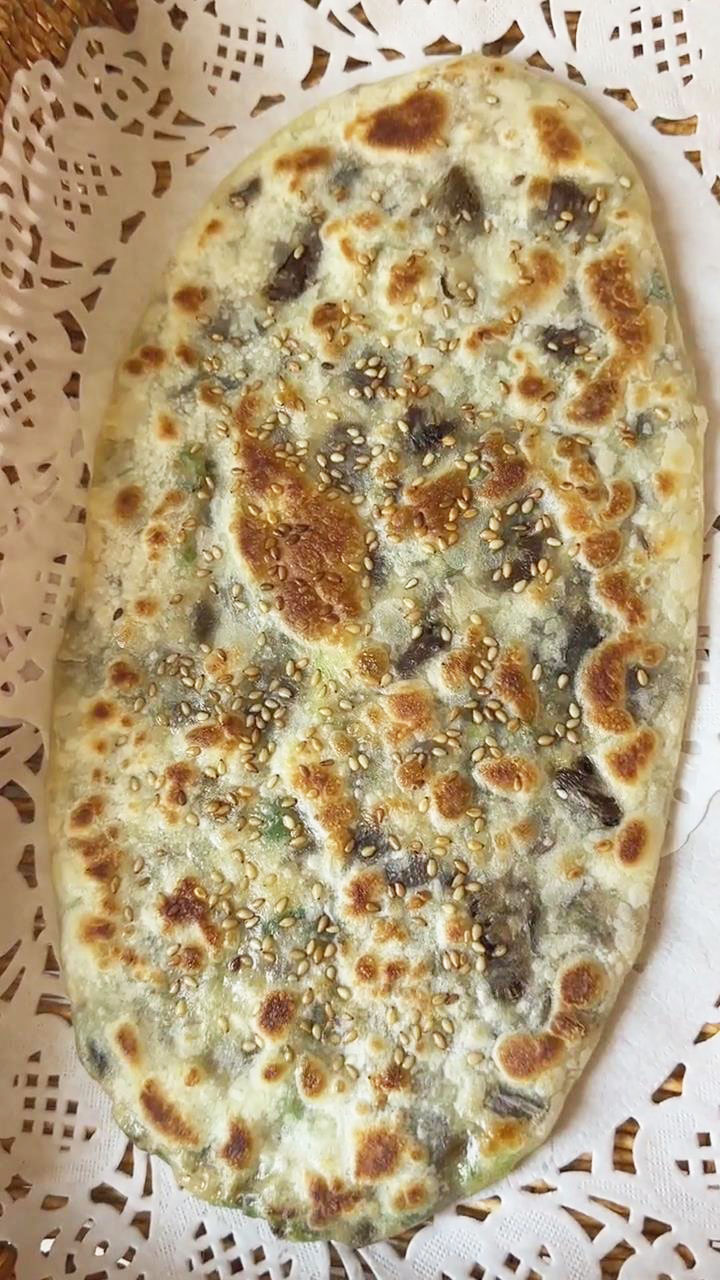This post may contain affiliate links. Please read our disclosure policy.
Forget about Chinese takeout or eating out at dim sum restaurants just for a basket of shrimp shumai! Make this dim sum classic at home in 5 easy steps. The ingredients take about 10 minutes to prepare while steaming the assembled shumai takes about 8 to 10 minutes.
What Is Shrimp Shumai?
Shumai is a type of dumpling also known as siu mai and shaomai that uses wonton wrappers. It is commonly eaten as a snack or appetizer in dim sum restaurants or Chinese takeouts.
This is easily distinguishable from other dumpling types with its open top and purse shape, unlike others that are closed and sealed.
It is typically steamed and served in a bamboo basket, but you may find other recipes that pan-fry this as well.
The most common filling for shumai is a mix of shrimp and pork. It is seasoned with various flavoring ingredients, such as white pepper powder, soy sauce, and cooking wine.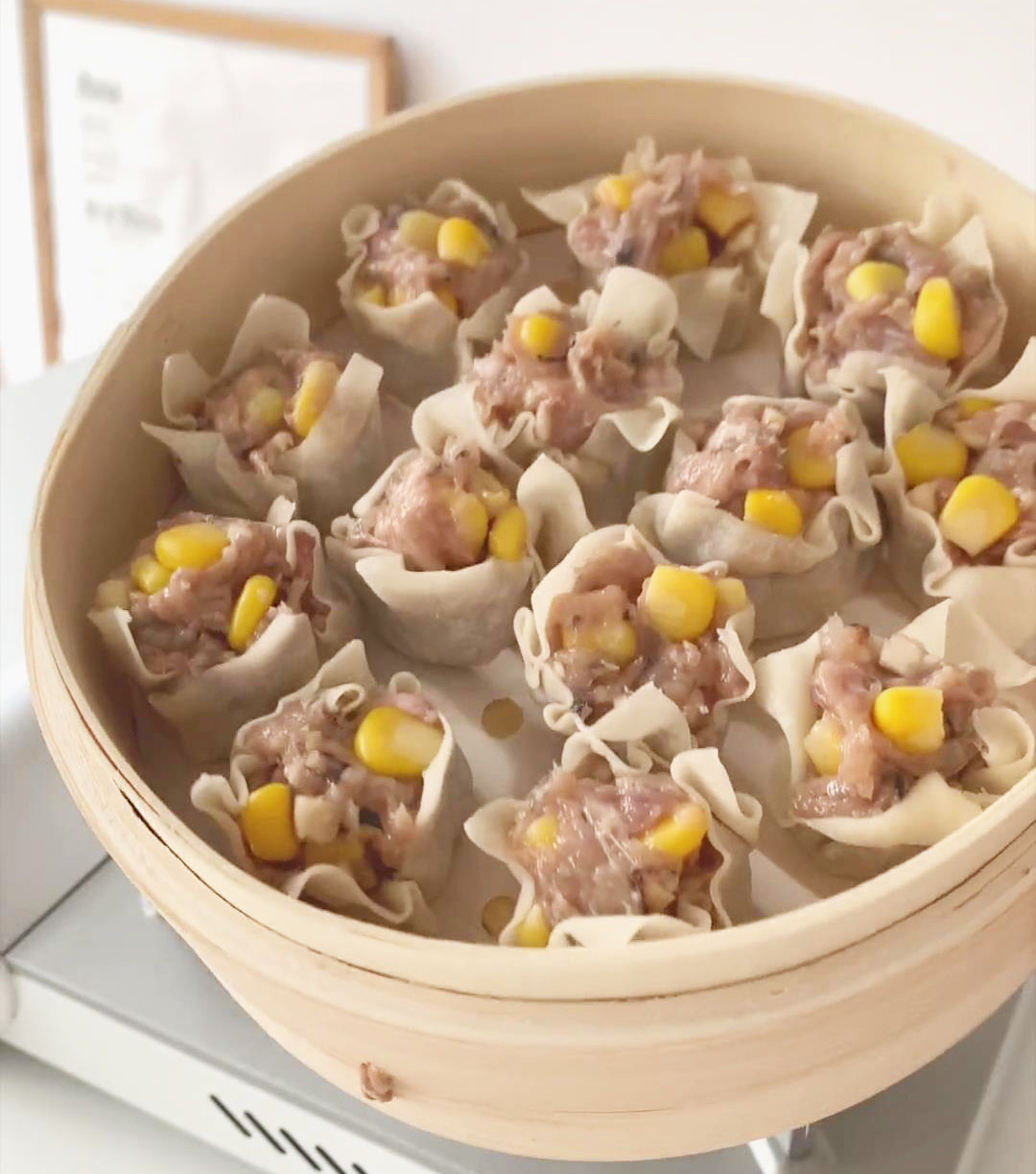
In my version of shrimp shumai, the shrimp and pork filling is seasoned with white pepper, chicken bouillon powder, garlic powder, light soy sauce, cooking wine, oyster sauce, and sesame oil.
To add more texture and flavor, I also added chopped shiitake mushrooms and corn kernels. Shrimp shumai is best served with various dipping sauces, which I will share below.
Pair this classic shumai with other traditional dim sum dishes, such as:
- Wu Gok 芋角 (Deep-Fried Taro Dumpling Puffs)
- Soft And Juicy Char Siu Bao
- Rice Paper Dumplings Recipe (Gluten-Free)
- Crispy Dumpling Skirt Recipe (Dumpling Lace)
What To Know About Wonton Wrappers
The main ingredient here is the wonton wrappers, also called wonton skin. You can find these in the refrigerated section in Asian grocery stores or in the international section of a local grocery store.
These are kept in small plastic packaging in small, thin, square sheets.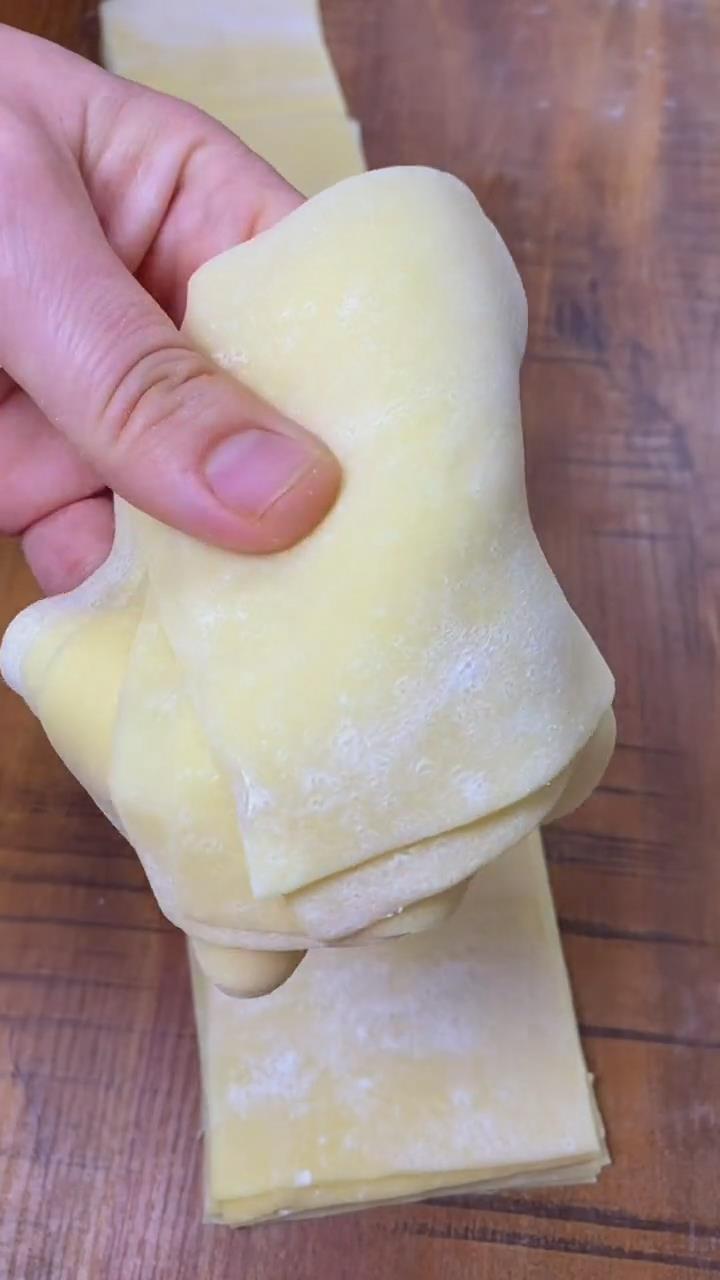
If you can’t find these wrappers in stores, I suggest making them yourself. Don’t worry because it’s actually pretty easy using pantry ingredients, including eggs, flour, and cornstarch.
Simply follow my recipe guide on How To Make Authentic Wonton Wrappers, where you will knead, rest, and shape the wonton wrapper dough.
Expert Tips For Using Wonton Wrappers
Thankfully, making shumai is much easier since you don’t have to worry too much about a wonton wrapper bursting open since a shumai does not require sealing.
However, there are still a few things to remember that can cause the wonton wrappers to tear or the shumai to break as you prepare or cook them. Do not skip this step if you have never handled wonton wrappers before.
- Avoid an overly watery filling: Too much moisture can tear the wrappers as they soak in the watery filling. It makes the wrapper soggy and fragile. The filling can be moist but not watery. Adding cornstarch or flour helps lessen the moisture in the filling.
- Avoid overloading with too much filling: Aside from a watery filling, I don’t recommend filling the wonton wrappers with too much filling. Put about 1 to 2 teaspoons of filling only. Too much filling can cause it to spill out.
- Keep the wrappers moist: Keep them moist, but not wet. As you are wrapping the shumai, you want to prevent the wonton wrappers on standby from drying out. The best way to do this is by covering the wonton wrappers with a damp paper towel. In this way, it stays moist and soft for shaping. Overexposure to air dries the wonton wrappers, making them too stiff to fold and break easily.
- Fold it correctly: Proper folding and sealing of the wonton wrappers is a big factor in keeping the shumai intact. For shumai, you don’t need to close and seal it since the top is left open. The edges of the wrapper are lifted up to surround the filling. However, you have to make sure the edges are all upright. If one part of the shumai is bent, the filling may spill out. If you want to try other ways to fold, check out my guide on 5 Easy Ways To Fold A Wonton.
- Prevent sticking with parchment paper: Use a non-stick container or parchment paper to place your folded shumai. As you fold the others, the assembled shumai may tend to stick on the surface, especially if it is plastic or glass. You want to be able to pick up the shumai without its skin sticking to the surface, making it difficult to lift or causing it to deform.
- Avoid stacking or overfilling the steamer: Place the shumai in the steamer basket with ample space in between. Do not stick them together or stack them to prevent sticking. When the wonton wrappers stick together, it increases the risk of tearing as you pull them apart.
Ingredient Tips And Alternatives For Shrimp Shumai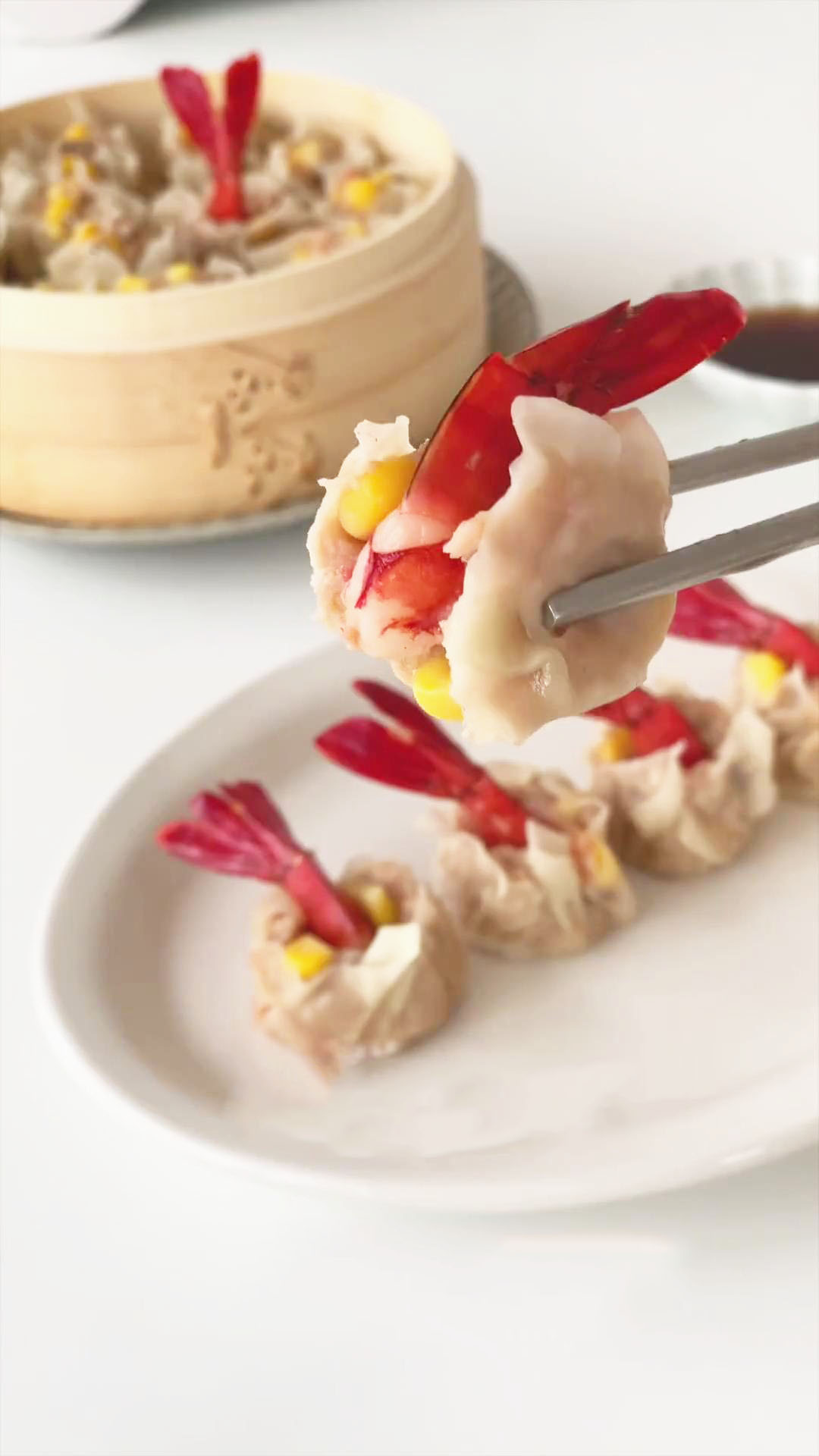
The best part of this dish is the flavorful filling, which you can customize in any way you want it.
You can use all the ingredients I used or omit the ones you don’t like. Here are some ingredient tips and alternatives worth considering:
- Shrimp: Use fresh or pre-prepared frozen shrimp. The shrimp is blended in a food processor until it becomes a smooth paste. If using fresh shrimp, make sure to peel and devein it before blending. You can leave a few pieces of shrimp to use as your topping, which is inserted in the center of the filing with the tail sticking out as decoration. In case you don’t have shrimp, you can try other seafood ingredients like cod and halibut.
- Pork: The pork is also blended into a smooth paste, so you can use any pork cut you like. If you want to skip the blending step, use ground pork instead. The pork cuts you can use are pork shoulder, pork butt, pork blade, and boneless pork leg.
- Salt: We all know salt enhances the overall flavor. Any salt will do, such as sea salt, kosher salt, or table salt.
- White pepper powder: Use pepper powder or freshly ground. The taste of white pepper is different from black pepper. It has a special earthy taste and subtle heat. You can swap this with black pepper powder. However, black pepper is more woody, piney, and hot.
- Chicken bouillon powder: Add a depth of flavor with chicken bouillon powder. You can also use pork cubes, vegetable powder, or Italian seasoning mix.
- Garlic powder: Keep in mind garlic powder imparts a stronger and more concentrated garlic taste. You can use garlic powder or granulated garlic and adjust the amount according to taste. If you don’t have these, use fresh minced garlic instead. However, you may need to add more since fresh garlic has a more subtle flavor. If you want something crispy, why not give my Crispy Fried Garlic recipe a try?
- Light soy sauce: Make it salty and umami with light soy sauce. If you don’t have light soy sauce, use regular or dark soy sauce. Adjust the amount to taste. Aside from these, you can also use tamari, liquid aminos, coconut aminos, or gluten-free soy sauce.
- Cooking wine: Chinese cooking wine or Shaoxing rice wine imparts a slightly sweet and briny taste. You can alternate this with dry sherry, meat or vegetable broth, red wine vinegar, or alcohol-free wine.
- Oyster sauce: Add a caramel-like and briny taste with oyster sauce. It is thick and dark in color and pairs well with soy sauce. Some excellent alternatives to oyster sauce are hoisin sauce, teriyaki sauce, kecap manis, Worcestershire sauce with soy sauce and sugar, oyster-flavored sauce, or fish sauce.
- Sesame oil: Make it more Asian with the distinct nuttiness and earthiness of sesame oil. It helps keep the filling moist without drying out as it is cooked. You can use other types of oil, such as olive oil, avocado oil, and safflower oil.
- Shiitake mushroom: Shiitake mushroom is my favorite among other types of mushrooms because of its smoky and earthy taste. You can use fresh or dried shiitake mushrooms. Go for rehydrated dried shiitake mushrooms for a stronger flavor profile. Button mushrooms, oyster mushrooms, and king oyster mushrooms are excellent substitutes for shiitake.
- Corn: Add a bit of milky and sweet taste with bits of corn. Use frozen or canned corn kernels to make it easier to prepare since you don’t need to take it off the cob. If you don’t have corn kernels, use whole corn and remove the corn with a knife.
- Garnish: Shumai is best known for its topping or garnish on top. The most common topping on shumai is an orange dot made of crab roe or carrot. For more variety, top it with green peas, scallions, or tobiko. For this recipe, I used fresh shrimp as my topping. I stick it in the center with the tail out.
- Optional ingredients: Change the taste and texture according to your liking with these optional ingredients:
- Chopped fresh ginger – adds a warm peppery kick
- Chopped lemongrass – imparts a mild citrus taste
- Cornstarch – makes it thicker and creamy
- Egg or egg white- holds the filling together and adds an eggy taste
- Water chestnuts – makes it sweet, nutty, and tart
How To Serve Shrimp Shumai
My favorite part of eating shumai is the dipping sauce. A dipping sauce is key in amping up the flavors, whether the shumai is steamed or pan-fried.
You can pair it with something sweet like sweet chili sauce or something savory like soy sauce.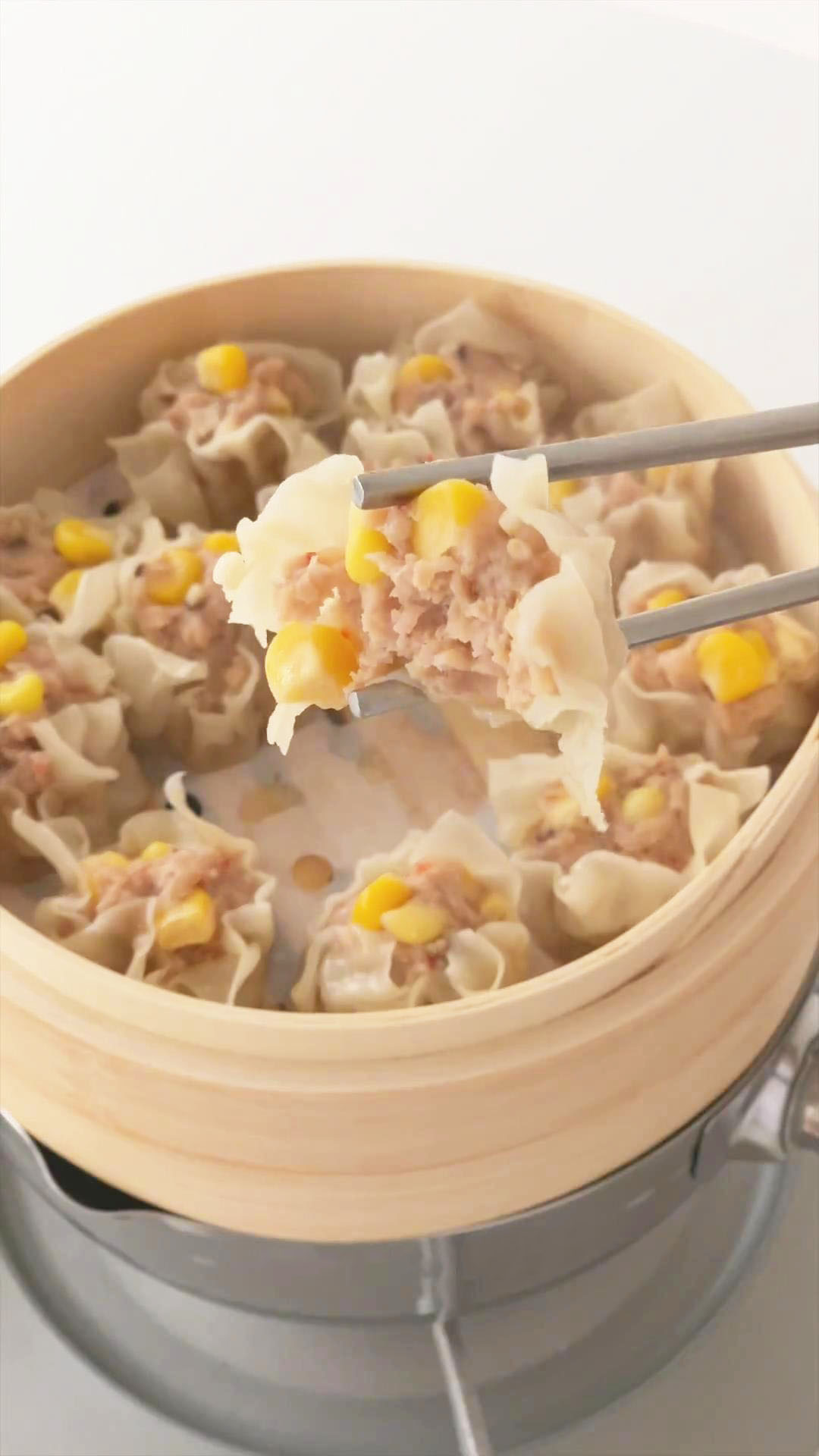
Need some ideas on what dipping sauce to prepare? I recommend my Four Dumpling Sauce Recipes, where you can make garlic-flavored dipping sauce, chili-infused dipping sauce, sesame dipping sauce, and hot wasabi dipping sauce.
For something fast and easy, go for chili oil, chili garlic, sweet chili, soy sauce, or soy sauce with sesame oil.
How To Freeze Shrimp Shumai
Make these ahead of time so you can have shrimp shumai anytime you crave it. Before freezing these, place the uncooked shumai in a tray or container lined with parchment paper. Make sure the shumai are not sticking together.
Freeze them until they are completely frozen. Once it is frozen, transfer the shumai to a freezer bag or container where you can safely stack them up without worrying about sticking together.
When you are ready to cook the shrimp shumai, there is no need to thaw it since you can directly steam it.
Ingredients And Kitchen Tools You Need
Prepare a food processor for blending and a mixing bowl for making the filling. You will also need parchment paper and a knife and chopping board. Of course, a steamer is also required to steam the shumai.
Have steaming equipment ready and bamboo steamer baskets for a more authentic shumai experience.
However, if you don’t have a steamer, you can still steam without a steamer in 5 ways: pan with steamer rack, microwave, pan with sieve, rice cooker, and instant pot. Make sure the steamer basket is lined with parchment paper to prevent the shumai from sticking to the basket.
The ingredients to prepare are the following:
- Wonton wrappers (approximately 22 pieces)
- 200g shrimp
- 100g pork
- 2g salt
- 2g white pepper powder
- 2g chicken bouillon powder
- 2g garlic powder
- 1 tsp light soy sauce
- 1 tsp cooking wine, I recommend using Shaoxing Wine for this
- 1 tsp oyster sauce
- 1 tsp sesame oil
- 50g chopped shiitake mushrooms
- 100g corn kernels
- Topping: Extra whole shrimp (optional)
Steps How To Make Shrimp Shumai
Make the filling, stuff the wonton wrapper with filling, and steam the shumai. And voila – a delicious steamed shrimp shumai ready in under 30 minutes. Watch how I did it with my Instagram or TikTok tutorial videos.
Finished making shrimp shumai? Don’t forget to show the results by tagging @kitchenmisadventures. If you have tips and suggestions, leave a comment in the comments section.
- Put the pork and peeled and deveined shrimp in a food processor. Blend until you form a smooth paste.
- Season with salt, white pepper, chicken bouillon powder, garlic powder, light soy sauce, cooking wine, oyster sauce, and sesame oil. Mix well.
- Cut the shiitake mushrooms into small bits.
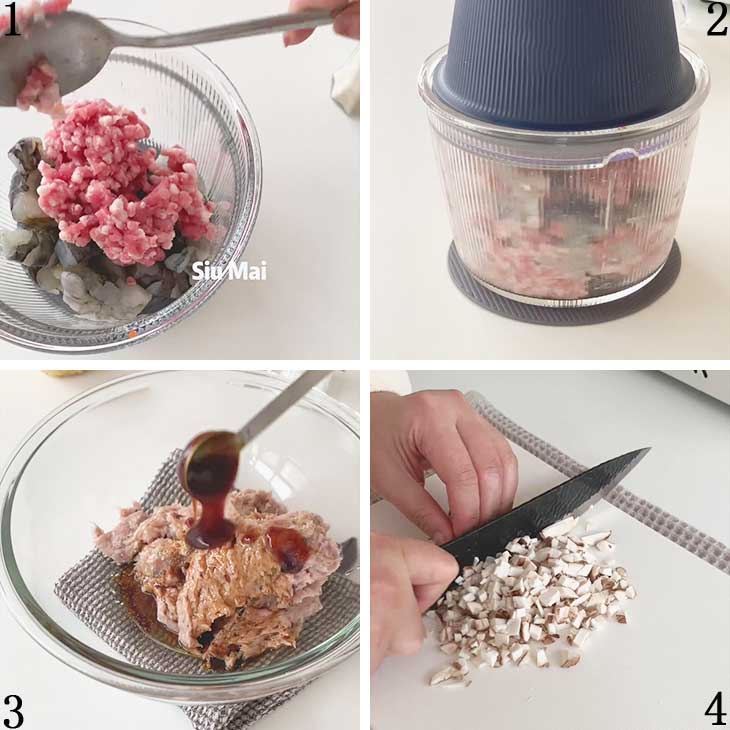
- Mix the chopped mushrooms and corn into the meat mixture. If using canned corn, be sure to drain any excess liquid.
- Take your wonton wrappers and place a teaspoon of filling in the center. Wrap the filling by pulling up the edges of the wrapper, giving you a basket-like shape. For decoration, consider topping it with shrimp, peeled and deveined, without the heads.
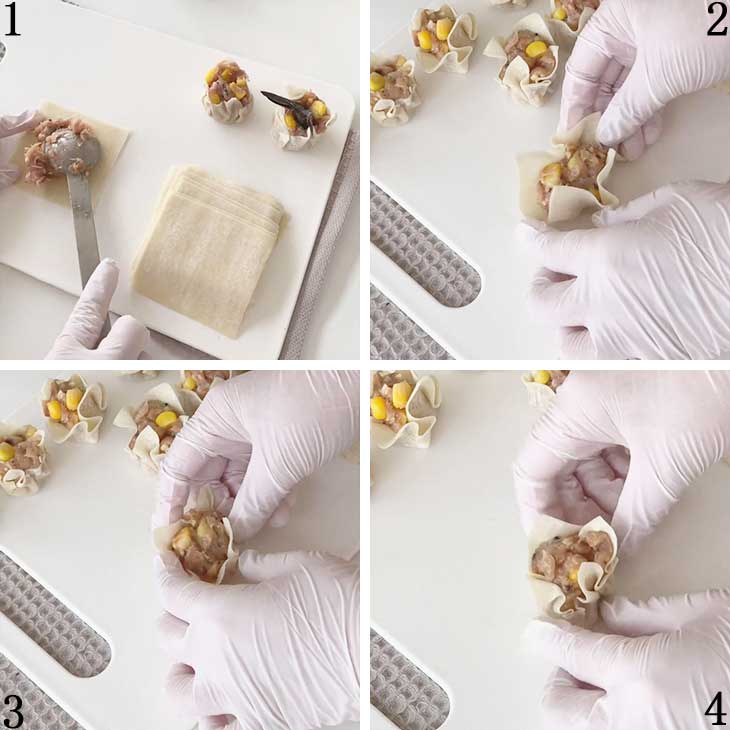
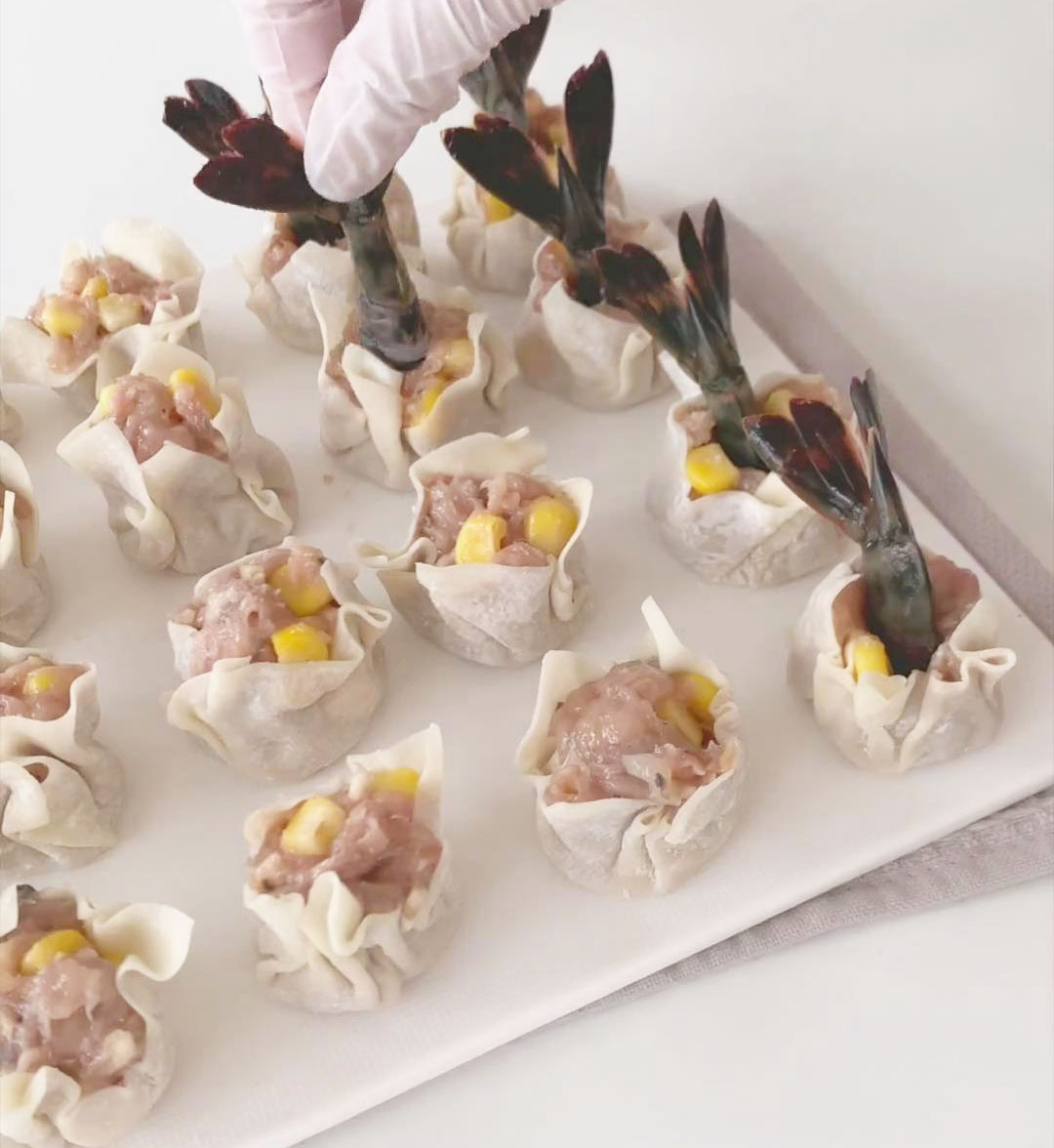
- Line the steamer basket with parchment paper, place the shumai, and steam for 8 to 10 minutes until cooked.
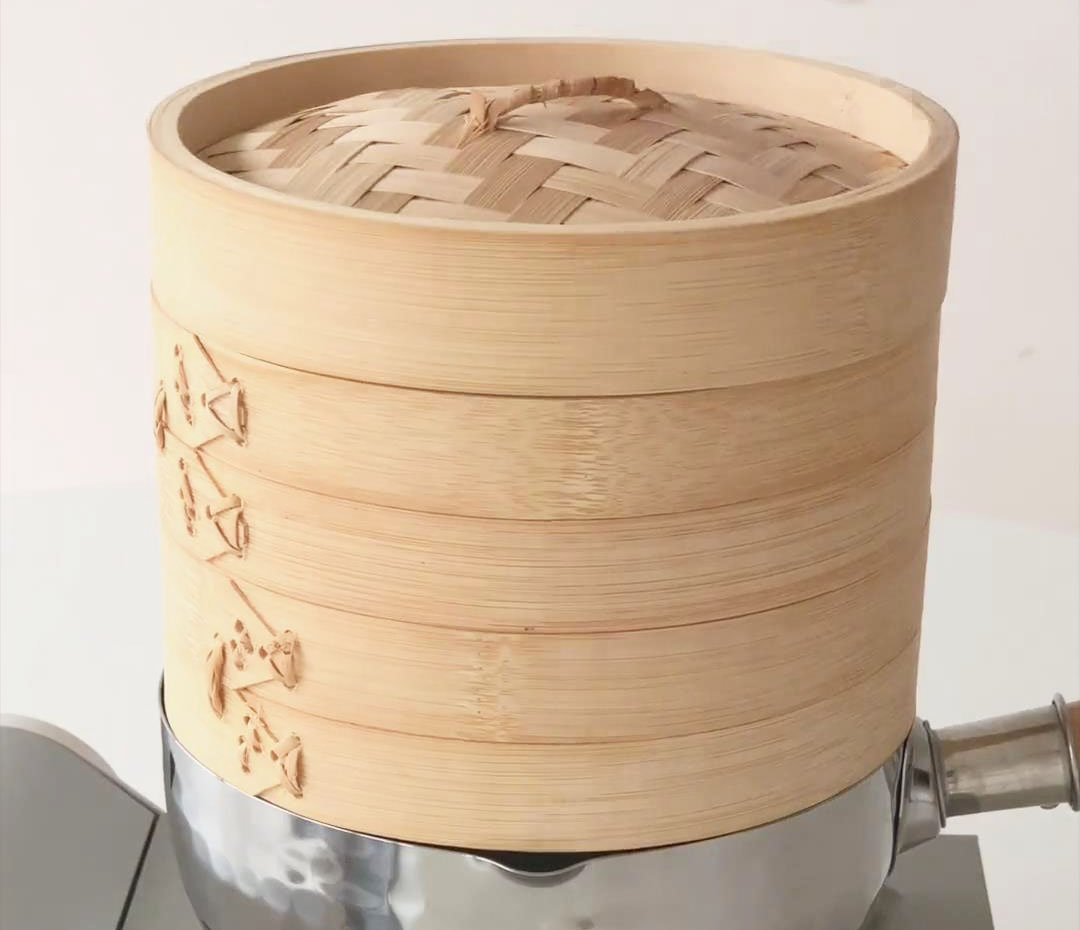
Got extra wonton wrappers? Use it to make Shrimp Wontons Recipe (Steamed Method) and Warming Pork And Shrimp Wonton Soup.
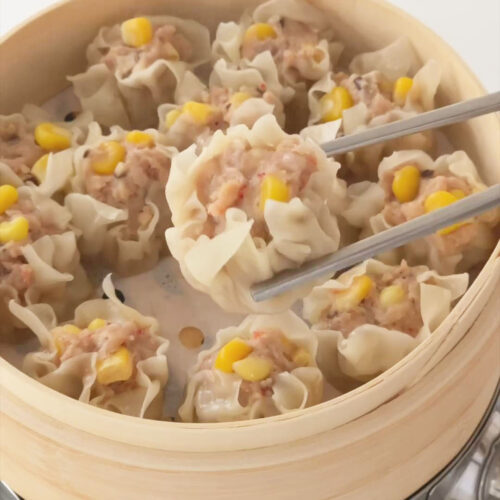
How To Make Shrimp Shumai
Ingredients
- Wonton wrappers approximately 22 pieces
- 200 g shrimp
- 100 g pork
- 2 g salt
- 2 g white pepper powder
- 2 g chicken bouillon powder
- 2 g garlic powder
- 1 tsp light soy sauce
- 1 tsp cooking wine I recommend using Shaoxing Wine for this
- 1 tsp oyster sauce
- 1 tsp sesame oil
- 50 g chopped shiitake mushrooms
- 100 g corn kernels
- Topping: Extra whole shrimp optional
Instructions
- Put the pork and peeled and deveined shrimp in a food processor. Blend until you form a smooth paste.
- Season with salt, white pepper, chicken bouillon powder, garlic powder, light soy sauce, cooking wine, oyster sauce, and sesame oil. Mix well.
- Cut the shiitake mushrooms into small bits.
- Mix the chopped mushrooms and corn into the meat mixture. If using canned corn, be sure to drain any excess liquid.
- Take your wonton wrappers and place a teaspoon of filling in the center. Wrap the filling by pulling up the edges of the wrapper, giving you a basket-like shape. For decoration, consider topping it with shrimp, peeled and deveined, without the heads.
- Line the steamer basket with parchment paper, place the shumai, and steam for 8 to 10 minutes until cooked.

